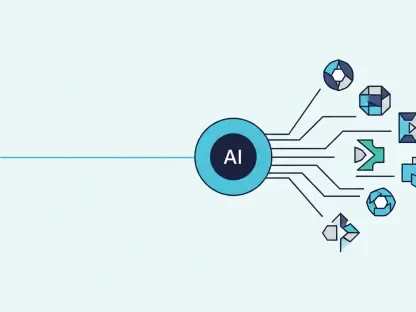As artificial intelligence continues to evolve at a breakneck pace, the challenges associated with its regulation become increasingly pronounced. In recent years, both governmental bodies and private companies have recognized the urgent need to address the risks associated with AI. The growing imperative to develop and maintain regulatory structures that can keep pace with AI advancements reflects the complex interplay between technological innovation and societal safeguarding. This article delves into the multifaceted efforts aimed at categorizing, understanding, and mitigating these risks, underscoring the necessity for regulatory frameworks that can keep up with technological advancements while ensuring safety and ethical compliance.
The Rise of AI Safety Concerns
The rapid advancements in AI technology have been accompanied by growing concerns over its potential to cause harm. Experts in the field, like Bo Li from the University of Chicago, focus on stress testing AI models to identify potential legal, ethical, and compliance issues. This shift from pure intelligence to safety and operational propriety marks a significant turn in the industry. Li’s work epitomizes a critical dimension of AI development: ensuring models do not operate improperly or cause unintended harm. The increasing focus on AI safety is indicative of the broader effort to balance AI innovation with rigorous scrutiny.
One initiative that exemplifies this trend is the collaborative effort by researchers from multiple institutions to develop a comprehensive taxonomy of AI risks. Their work culminated in AIR-Bench 2024, a benchmark tool that assesses various AI models against a wide array of potential hazards. This effort underscores a broader industry focus on identifying and mitigating risks, ensuring that AI technologies do not inadvertently cause harm. By stress-testing popular AI models with thousands of prompts, AIR-Bench 2024 provides critical insights into the strengths and weaknesses of these systems, helping to fine-tune safety measures across the board.
Benchmarking AI Risks: Insights from AIR-Bench 2024
The AIR-Bench 2024 tool provides a critical lens through which to evaluate the safety features of popular AI models. By utilizing thousands of prompts to test these systems, researchers can identify specific areas where each model excels or falls short. For instance, Anthropic’s Claude 3 Opus has been found particularly adept at avoiding the creation of cybersecurity threats. Conversely, Google’s Gemini 1.5 Pro performs commendably in preventing the production of nonconsensual sexual content, showcasing how targeted testing can illuminate different performance spectrums.
These findings highlight the varied performance of AI models in managing different types of risks. They also reflect the ongoing need for rigorous testing and benchmarking to ensure that AI systems adhere to the highest safety standards. Through tools like AIR-Bench 2024, the industry gains valuable insights that can inform better regulatory and corporate policies. Databricks’ DBRX Instruct, for example, fared poorly across several risk categories, signaling areas that require substantial improvement. This level of granularity in evaluating AI models is essential for advancing industry standards and regulatory frameworks.
The Disparity Between Government and Corporate AI Standards
One of the most compelling observations from the research on AI safety is the gap between government regulations and corporate policies. The study revealed that standards set by governments in the US, China, and the EU are often less comprehensive than those established by AI companies. This mismatch indicates a need for regulatory bodies to tighten their guidelines to ensure a higher level of AI safety and compliance. Such disparities highlight a critical imbalance where private companies lead the way in AI safety, outpacing the slower, more bureaucratic processes of government regulation.
The inconsistency in adherence to safety protocols among AI models further complicates the regulatory landscape. Some models do not consistently follow the safety policies instituted by their developers, highlighting an area ripe for improvement. Continuous monitoring and updating of AI systems are crucial to ensure they function within ethical and safe parameters, a responsibility that falls on both regulatory bodies and the corporations developing these technologies. Ensuring a more synchronized approach between governmental standards and corporate policies will be key to creating a cohesive framework for AI safety.
Parallel Efforts to Address AI Risks: The Role of Databases and Frameworks
In addition to benchmarking tools, there are parallel efforts aimed at taming the AI risk landscape through comprehensive databases and frameworks. MIT’s project to compile a database of AI dangers, drawing from 43 different risk frameworks, represents a significant step in guiding organizations through the complexities of AI risks. This database provides a detailed look at various hazards, helping companies in the early stages of AI adoption navigate the regulatory waters. By consolidating information from multiple sources, MIT’s initiative offers a broad view of AI risks, facilitating more informed decision-making.
The database reveals a notable focus on privacy and security issues, mentioned in over 70 percent of frameworks, while other risks like misinformation receive less attention. This disparity suggests that regulatory guidelines and corporate policies need to be more encompassing to cover the full spectrum of potential AI risks, ensuring that advancements in AI do not compromise safety and ethical standards. Such comprehensive databases can serve as essential tools for organizations, helping them prioritize areas of concern and align their safety protocols with the latest industry benchmarks and regulatory standards.
Emotional Stickiness and the Need for Continuous AI Safety Improvements
As artificial intelligence evolves at a rapid pace, the challenges of regulating it become more pronounced. Governmental bodies and private companies alike have recognized the urgent need to address the risks that come with AI. This need to develop and maintain regulatory structures that can match the speed of AI advancements highlights the complex relationship between technological innovation and societal safety.
This article explores the diverse efforts to categorize, understand, and mitigate these risks. It emphasizes the necessity for regulatory frameworks that keep up with technological progress while ensuring safety and ethical standards. Addressing the risks tied to AI is not just a technical issue but a societal one, requiring collaboration across industries and regulatory bodies. The evolving nature of AI demands constant vigilance and adaptability in regulatory approaches to safeguard both innovation and public welfare.
As we advance further into AI integration, the imperative for comprehensive, flexible, and dynamic regulations will only grow. Collaboration between tech developers, regulators, and society at large will be crucial to balance innovation with responsibility.









